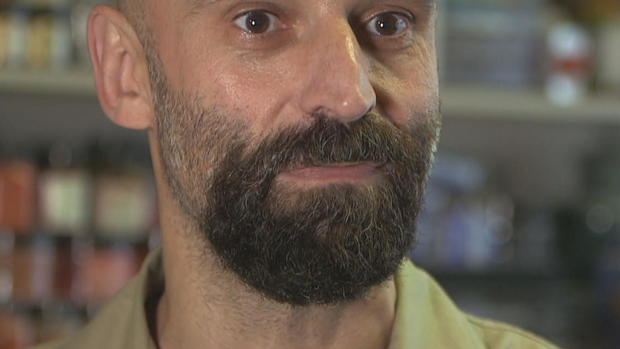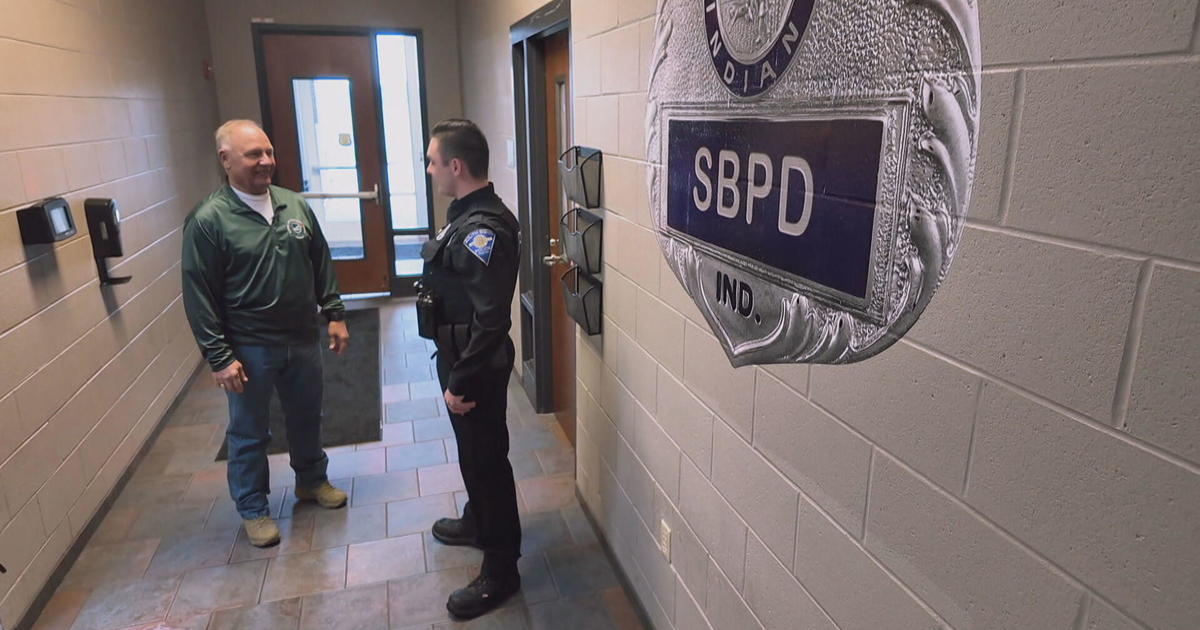Crushed beetles and rabbit's skin glue: How a London artist is reviving hues from centuries past
Pedro Da Costa Felgueiras is equal parts artist and alchemist. Inside his East London studio, you'll find a kaleidoscope of powder that when mixed and mashed reveals rare shades from the past.
"Back in the 18th century, painting was like cooking. You really had to know your ingredients," Felgueiras told CBS News' Jonathan Vigliotti.
They are ingredients like rabbit skin glue, which he said is the most ancient kind of paint medium one can use. He uses it to make pigments that were popular a century ago but have faded over time.
As a conservator, it's Felgueiras' job to first research and match time periods with their appropriate pigments and then, following ancient paint recipes, bring historic landmarks back to their original grandeur. As staff at London's 18th century Strawberry Hill House have learned, authenticity can have its own unique scent.
"The volunteers started to complain about the smell, a very putrid smell and actually I found them walking around with air fresheners which is actually the last thing you should do it damages the surface of the paint," Felgueiras said.
That smell, depending on the color, could come from any number of unusual ingredients.
Cochneal is made with crushed beetles. Verditer, which is the result of a chemical reaction with copper sulfate, is known for the amount of elbow grease that goes into it. Felgueiras only knows one man who has the patience to make it by hand.
"He's happy to be up all night for three weeks to stir it every hour, because you have to stir it every hour," he said.
Felgueiras' passion for color began when he was a kid, growing up in the vibrant streets of Lisbon, Portugal, a city he said hasn't done enough to preserve its history.
"I remember every single villa before it got knocked down, I still remember the colors vividly. I remember the purples, the greens, the yellows and stuff," he said.
His latest project has him preserving a piece of London's past, a massive dragon will join dozens of others on top of the pagoda in Kew Gardens. All of them replacing identical ones removed more than a century ago.
Felgueiras identified the colors that would have likely been used in the 1700s. Vibrant greens and reds.
"I'm proud to be part of it but it's not about me it's about the building," he said.
Buildings and their past being given a fresh coat of old paint.




